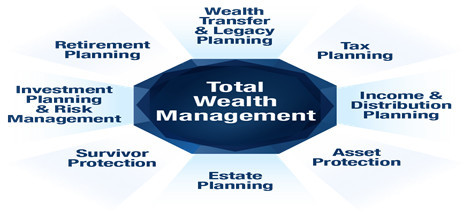What Is A 457 Retirement Plan? How Does It Work?

The 457 Plan is a type of tax-advantaged retirement plan with deferred compensation. The plan is non-qualified – it doesn’t meet the guidelines of the Employee Retirement Income Security Act (ERISA). 457 plans are offered by state and local government employers, as well as certain non-profit employers. A 457 plan is provided by the government and local state organizations (and some non-profit organizations), allowing employees to contribute portions of their salary into a tax-advantaged, non-qualified retirement vehicle.
What Is a 457 Plan?
A 457 plan is commonly associated with state and local government, while many private-sector employers offer a similar type of plan. It is a deferral, defined contribution, Roth or Traditional IRA-type plan. 457 contributions are not deductible as income (for federal income tax purposes), but are fully or partially deductible for state and local income taxes and in certain cases, for self-employment taxes. The 457 plan is different from a 403(b) (a non-qualified defined contribution plan), in that the 457 is not eligible for “catch up” contribution amounts or for matching contribution to an employer’s contribution.
How a 457 Plan Works
The employer may contribute up to $52,000 per employee (10% of employee’s compensation up to a maximum of $208,000 in 2019) or as many as 20% of employee’s compensation. As the employee draws out portions of the contribution over his or her life, he or she gets to keep this tax-free. Any balance leftover at the end of the year is returned to the employee. The 457 plan is for employees of state and local government organizations. You can contribute up to 25% of your salary to the plan, or $127,200 (for 2018), or up to $132,500 (for 2019) if you are age 50 or older. The plan has a $3,400 annual maximum in employer match funds. However, the federal government match is $1,000 and your employer match is $2,400 for 2018, so your employer and federal government match are equal to $4,400. You don’t have to take any distributions until age 59 ½.
Advantages of a 457 Plan
According to a study conducted by Fidelity, a 457 plan can provide a tax benefit of up to $40,000 annually for middle-income participants. Qualified participants can defer taxes up to an additional $16,000 annually through their first five years. After that, they can defer up to $30,000 annually. unqualified participants can contribute up to $54,000 annually tax-deferred (or $17,000 annual) if they meet certain requirements.
A 457 plan offers an employer a 50% match on qualified plan contributions. Even though the 457 plan isn’t a qualified retirement plan (such as a 401k), an employer may contribute up to $52,000 (for 2018) into the 457 plan on behalf of each employee on a tax-deductible basis. If the employer makes matching contributions, this is a 50% tax deduction on the employee’s contribution, and an additional 50% tax deduction for the employer, resulting in an immediate tax savings of the employee’s contribution. Employer and employee contributions are protected 457 plans are a tax-deferred savings plan, and contributions are not subject to income tax, Medicare tax, FICA tax, or Social Security taxes.
This post contains affiliate links. Please please read my Disclaimer for more information
Limitations of a 457 Plan
There are a few significant limitations to the 457 plan. There are no investment restrictions on the plans – so, once money has been contributed to a 457 plan, there’s no need to diversify. Unlike 401(k) plans, 457 plans are non-qualified. So, if an employee takes a loan from the plan, it must be repaid in order to receive the refundable portion of the contribution back. There are some exceptions to the rules – such as the case of government employees. If an employee is an employee of a government entity, there’s a one-time exemption that makes it easier for employees to invest a small amount of their salary without losing the benefit of the tax-advantaged funds.
Types of 457 plan
There are four types of 457 plans: Regular – a current 457 plan with a percentage of salary matching contribution, and employer match. Mandatory – a current 457 plan with a percentage of salary matching contribution, and employer match. Permitted – a current 457 plan with a percentage of salary matching contribution, and employer match. Unrestricted – a current 457 plan with a percentage of salary matching contribution, and employer match. 457 plans work because employees can contribute pre-tax dollars – either through direct deposit or by paying themselves. While the contribution and/or the employer’s matching contribution is not taxed, the balance of the account is after-tax, and in most cases after-tax dollars.
How Withdrawals in 457 Plan Work
A 457 plan allows you to take advantage of both the tax-deferred aspects of a 401(k), as well as the tax-free aspects of a 403(b). An investor can withdraw the funds, tax-free (within limits, depending on your specific plan), as a lump sum, in smaller amounts, or in combination. The lump sum, however, is taxable as ordinary income (unless the amount withdrawn is below the applicable withholding taxes). At age 62, the 457 workers are generally allowed to begin taking withdrawals from the plan. Any vesting requirements or time payments must be met, however.
Rollover and Transfer Options
The custodian of a 457 plan allows participants to roll over balances over to a new participant, or roll over to a personal IRA. The custodian will automatically roll over the balance, with or without a change in beneficiary information. The rollover amount is determined by the value of the balance at the start of the rollover. For example, if a participant has a $100,000 balance, the rollover amount will be equal to the balance at the time of the rollover, multiplied by a one-time income tax savings for the participant. Rollovers are accomplished by the custodian and financial institutions.
Special Consideration for 403(b) Plan Holders
Although there are pros and cons to the 403(b) plan structure, the key difference is that the 403(b) plan type has the characteristics of a defined benefit plan (traditional plan), not a defined contribution plan (401k plan). Some 403(b) plans offer features and benefits not available to other plans (i.e., a fee-for-service option). Contributions made to a 403(b) plan must be made with pre-tax dollars, and the plan has no upfront employer contribution.
There are two other important points to note in regards to 403(b) plans: The 403(b) plan you are in will automatically roll over your 401(k) to your 457 plan after 10 years, or sooner if you request it. You can rollover your 403(b) after 15 years of service unless you request it in the contract. There are three major differences between the 403(b) and 457 plans. The biggest difference is the way contributions to the 403(b) are tax-deductible. Employers will make an offer letter, which gives employees the opportunity to participate in a 403(b) plan. The 401(k) option is the default option for new employees, and once employees join the 401(k) program they can continue to contribute in the 403(b) plan until age 59 ½.
The benefits of a 457 plan
The 457 Plan has tax benefits on both the employee and the employer side. The employee has to contribute to a separate account on the individual side, called the “discretionary” account. The amount that the employee contributes to the plan is counted as income and taxed as regular income. But on the other hand, the employee’s wages are protected from the excesses of the income tax, and the contribution does not count as income on the employee’s return. The employee then receives a withdrawal from the plan for a period equal to the number of years worked. For example, the employee works 20 years in the plan. The employee receives a 10% return on the money.

Conclusion
Until President Trump signs the tax plan into law, 457 plans will continue to exist as federal law. For now, employers who want to incorporate the plan into their benefits packages for their eligible employees should do so now and consider offering it to additional employees as well.
“If you have any feedback about what is a 457 retirement plan that you have tried out or any questions about the ones that I have recommended, please leave your comments below!”
NB: The purpose of this website is to provide a general understanding of personal finance, basic financial concepts, and information. It’s not intended to advise on tax, insurance, investment, or any product and service. Since each of us has our own unique situation, you should have all the appropriate information to understand and make the right decision to fit with your needs and your financial goals. I hope that you will succeed in building your financial future.














